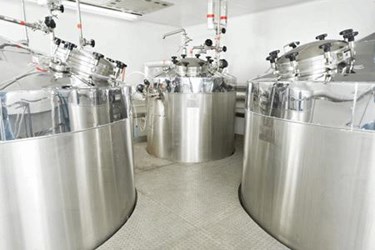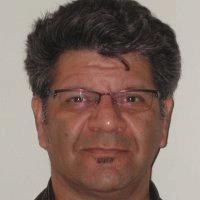High Potency Service Providers: The Contenders And Pretenders

By Louis Garguilo, Chief Editor, Outsourced Pharma

“Oh yes I'm the great pretender; Pretending I'm doing well …”
-- from the 1955 song by The Platters
Is your CMO as accomplished at handling high-potency (HP) compounds as you think? Allan Ader, PhD and Diplomate of the American Board of Toxicology (DABT), suggests you look into “separating the contenders from the pretenders.” It’s a phrase he uses a lot, and to which he’s devoted a good deal of his career.
Ader, and Robert Sussman, PhD, DABT, have been named co-managing directors at SafeBridge Consultants, Inc., taking the leadership reins for the company from John Farris, founding president and CEO. Below they guide Outsourced Pharma readers through some of the essentials of high potency facilities, both at providers and sponsors.
A Qualitative Measurement Of Safety
 “Today, the real challenge in the industry is assessing the manufacture of potent compounds in much the same way other aspects of pharmaceutical manufacturing, especially product quality, are measured,” says Ader, who is also a SafeBridge co-founder.
“Today, the real challenge in the industry is assessing the manufacture of potent compounds in much the same way other aspects of pharmaceutical manufacturing, especially product quality, are measured,” says Ader, who is also a SafeBridge co-founder.
Focusing specifically on contract development and manufacturing organizations, he continues to see “a lack of quantitative industrial-hygiene-exposure data that verify controls for high-potency compounds to actually meet target concentration levels.”
 “In other words,” adds Sussman, “We can go into a facility and see these nice controls in place. Yet when we ask, ‘For this particular control, what air concentration are you actually meeting?’ they often just don’t know.” He says these CMOs may have done a related study years prior – perhaps when the HP suite came on line – but nothing since, and rarely for the specific compounds currently in production.
“In other words,” adds Sussman, “We can go into a facility and see these nice controls in place. Yet when we ask, ‘For this particular control, what air concentration are you actually meeting?’ they often just don’t know.” He says these CMOs may have done a related study years prior – perhaps when the HP suite came on line – but nothing since, and rarely for the specific compounds currently in production.
“Industrywide, when companies develop a new drug that reaches Phase IIb of clinical development, they should establish an occupational exposure limit, or OEL,” says Ader. “And in parallel, develop a permitted daily-exposure (PDE) limit – an acceptable amount that establishes a cleaning limit to minimize cross contamination from product-to-product.’” To “evaluate quantitatively potential worker exposures,” facilities handling an HP compound, or the drug innovators themselves, need to develop a way to measure it in air, utilizing “an industrial-hygiene analytical method.”
“And then they need to go out in the field and measure it,” Ader says adamantly. “This is no different from performing industry-recognized quality assessments that evaluate purity to specific levels.” He adds: “Manage potent compound safety like you do other aspects of your business, and you should be successful in your operations, and get the added benefit of protecting your workers.”
The Certification
SafeBridge is perhaps most known for its program to assist pharmaceutical and biotechnology companies in identifying contract manufacturing organizations qualified in the safe handling of potent active pharmaceutical ingredients (APIs) and drug products. The SafeBridge Potent Compound Safety Certification program provides drug innovators and CMOs with an independent assessment of their manufacturing capabilities for safe production, a metric to evaluate their own performance, and encourage continuous improvement throughout the industry.
The program started in 2002, when Ader and company were being asked by Big Pharma professionals to establish “a program so we can distinguish the best companies to work with our HP programs.” Part of the approach came from the experience that Sussman had gained while working at Warner Lambert and Pfizer. “Back then, we wanted to investigate what the best practices would be for HP, and then determine if the CROs and CMOs could meet these criteria.”
The culling of the contenders from the pretenders then got under way. Explains Ader: “A contender not only has an adequate facility, and the facility design necessary for process flow and containment, but it also means they have the requisite support, the training, work practices and procedures – which we call the software – to go along with the facility hardware. Part of that software package, if you will, means they have established OELs and that they’ve gone out and monitored and validated that the controls are adequately protective of worker safety.”
Ader pauses, and then corrects himself. “Sorry, we don’t like to use the word ‘validation.’ We talk about ‘verification,’ ensuring controls have adequate, quantitated data to support achieving a certain level for exposure concentration when handling potent compounds.”
Few And Farther Between
Having experienced working at an HP service provider with SafeBridge certification, I’m surprised to learn only about a dozen CMO today are certified. With the growth in complex compounds, and technologies such as antibody-drug conjugates (ADCs), immunotherapy and nano, and the rising calls from biotechs and pharma for more and more reliable HP capacity to come on line, that seems like a low number.
Sussman says he believes the business advantage is clear, and there are many providers out there providing HP services. However, more CMOs haven’t entered the certification program because “it’s just not that easy. You are making a sustained commitment. Once you become certified, you have to demonstrate continuous improvement each year to keep it.”
CMOs may have to allocate significant time and resources upfront to put rigorous programs in place. “You can’t just buy some shiny stainless steel isolators. You have to put management systems in place, have the right staff and training, and you need preventive maintenance programs to make sure that the devices, which you have spent millions of dollars on, are actually working. So it’s a real commitment to excel in the HP field.”
Ader points to another limiting factor. “Something you should know is some CMOs don’t participate because of the fear of failure,” he tells me. That’s unfortunate, since SafeBridge will provide a preliminary assessment, and let companies know if they’ve a good opportunity to pass or not. “They can use that information, if not always to attain the highest level that we consider supporting the best industry practices, but to improve themselves,” Ader explains.
If Ader and Sussman see anything different they need to focus on since taking over for CEO Farris, it’s the interest from service providers outside the U.S.
“We just had a request from Russia yesterday,” says Ader. “I’ve been traveling to Taiwan and Japan, and we’ve also developed a significant Korean footprint. We’ve had some projects in Uruguay and Columbia in South America. And,” he adds, “as compounds get more potent, we expect more requests for assistance from the worldwide pharmaceutical industry.”
Regarding those multiplying potent compounds, Ader provides the example of antibody-drug conjugates (ADC’s), and other molecules being conjugated to various substances. He points to a P&S Market Research report stating: “The pipeline of ADCs is rich with more than 200 drugs.”
“That’s a pretty large number, if we estimate half of those drugs need to be made by a CMO, which is about the percent of all new drugs made by CMOs,” Ader extrapolates. “So that one area alone would suggest the industry needs more capacity and capabilities, both on the API side and the drug product side, plus the conjugation.”
Of course Ader and Sussman are hoping most of that capacity is brought online by real HP contenders, and that sponsors will be able to accurately judge who those service providers are.
